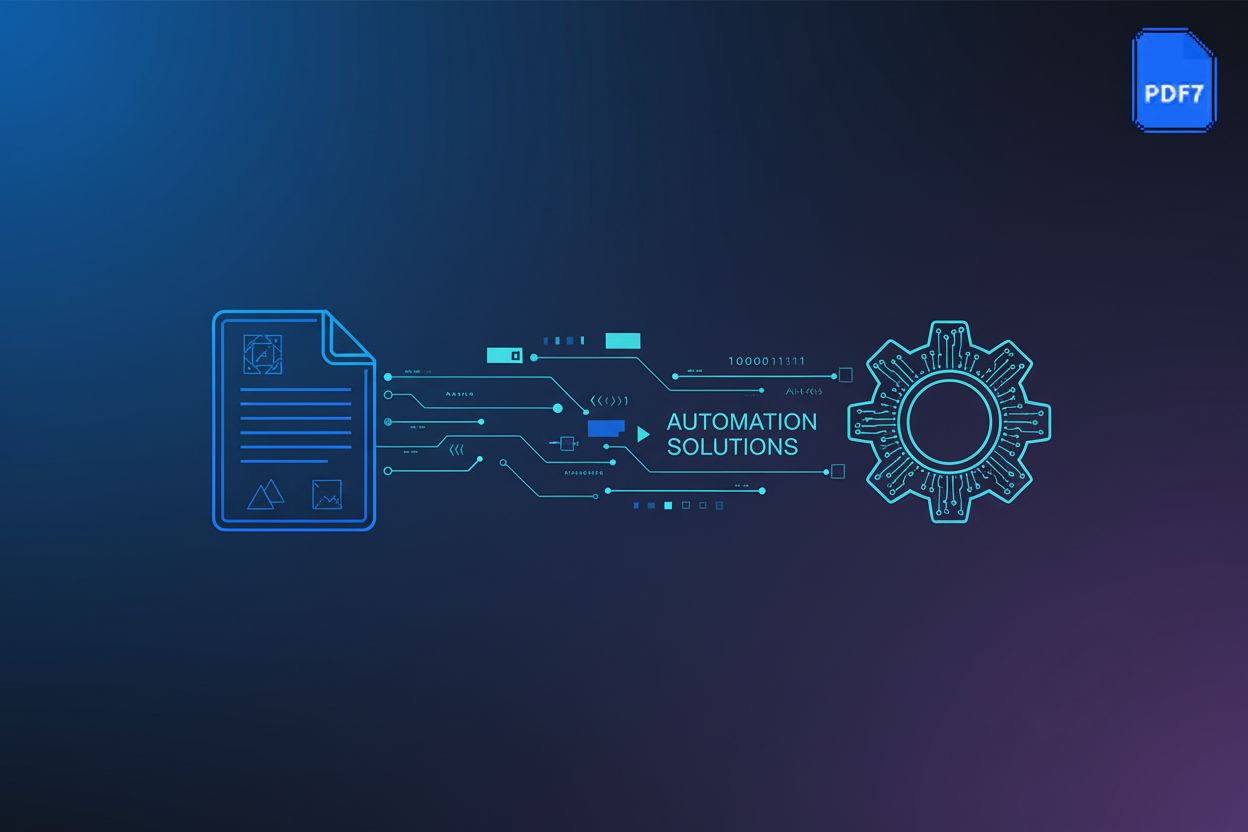Top Tools for Conducting a Content Audit
TL;DR
Understanding the Importance of a Content Audit
Alright, let's dive into why content audits are like spring cleaning for your website - except instead of finding old socks, you're unearthing outdated content! I mean, who doesn't love a good clean-up, right?
A content audit is a systematic review of all your published content to evaluate its performance, relevance, and effectiveness. It's more than just counting pages; it's about figuring out what's working, what's not, and what needs a serious makeover.
- Staying Relevant: Think of your website as a garden. You can't just plant it once and expect it to thrive forever. As HubSpot puts it, there's "a ton" of content writing apps to help you! Regular audits keep your content fresh and relevant, kinda like weeding out the bad stuff.
- Spotting the Gaps: Maybe your healthcare site is rocking the blog posts on heart health, but you're totally missing content on diabetes. Audits help you see these gaps so you can create content that actually meets your audience's needs.
- Killing the Redundancy: Ever find yourself writing the same thing multiple times? Audits help you spot duplicate or overlapping content. Consolidating that stuff not only saves you time but also boosts your seo, according to Semrush.
Imagine a retail company whose blog is full of articles about '90s fashion trends, but their customers are searching for "sustainable fashion 2024". A content audit would flag this disconnect, pushing them to create new, relevant content. Also, I gotta say, I've seen it happen first hand - fixing this stuff is a game changer.
Or picture a financial firm whose site has five different white papers explaining the same basic investment strategy. An audit could merge these into one comprehensive guide, making it easier for users to find what they need.
These audits aren't just for the big guys either, small businesses and solo entrepreneurs can use them too.
So, what's next? Well, now that we're all clear on why content audits matter, let's get into how to actually do one. Since a content audit often involves dealing with various content formats, including PDFs, having the right tools to process and convert them is essential.
Essential Tools for PDF Processing and Document Conversion
Okay, so you're staring at a PDF, and it's like, "Haha, try and use me for your content audit!" Don't worry; there are tools to wrangle those digital documents into shape. It's not always smooth sailing, but it's way better than retyping everything, right?
First up, you'll need to actually get the data out of the PDF. For this, conversion tools are your best bet. These let you transform PDFs into editable formats like Word or Excel. Accuracy is key; you don't want a jumbled mess after conversion. Batch processing? Even better, especially if you're auditing a lot of content.
- Adobe Acrobat: The OG, and still a solid choice, but it can be pricey. Good for complex layouts, though.
- Smallpdf: A more lightweight, online option. Great for quick conversions and simple edits.
- iLovePDF: Similar to Smallpdf, but often has slightly different features, so it's worth checking both.
Sometimes, you don't need to convert the whole thing, just tweak it. That's where editing software comes in. Think merging multiple PDFs into one mega-document or splitting a huge file into smaller, manageable chunks.
- PDFescape: A free, web-based editor. Perfect for basic changes and annotations.
- Sejda: Offers both online and desktop versions. I like it for its page management features--rearranging, deleting, etc.
- Online2PDF: Another online tool that's good for converting and editing. It's got a bunch of options, so it's worth a look.
What if your PDF is just an image? Optical Character Recognition (OCR) to the rescue! OCR software recognizes text within images, making it selectable and editable. This is crucial for accessibility and, of course, for getting that sweet, sweet text into your content audit spreadsheet.
- ABBYY FineReader: A powerhouse OCR tool. It's not free, but it's accurate.
- Adobe Acrobat: Again, Acrobat makes an appearance. It's OCR capabilities are decent, especially if you already have it.
- OnlineOCR: A free option for simple extractions. Don't expect miracles.
Choosing the right tool depends on your specific needs and budget, of course. Some tools are better for simple conversions, while others are designed for more complex tasks.
Next up, we'll get into the fun part: analyzing your content and figuring out what's working and what's not.
Content Analysis and SEO Optimization Tools
Content analysis and seo optimization tools are like having a super-powered magnifying glass for your website. I mean, you think your content is great, but is google? Are people actually reading it? These tools will tell you.
These tools give you real-time feedback, which is, honestly, a lifesaver. They analyze your stuff as you write, pointing out things like keyword density - making sure you're not stuffing keywords, which is a big no-no. Keyword stuffing is when you overusing keywords unnaturally to manipulate search rankings, which can harm user experience and SEO. They also give you readability scores, so you can tell if your content is too complicated for your audience. Readability scores indicate how easy your content is for your target audience to understand.
For example, Semrush SEO Writing Assistant is a popular pick, integrating directly into Google Docs and WordPress, so you can get real-time suggestions. It checks for readability, originality, and even tone of voice, suggesting ways to improve.
Keyword research is everything. You could write the most amazing blog post ever, but if nobody is searching for the topic, it's gonna be crickets. Keyword tools help you find out what people are actually looking for and how competitive those keywords are.
For instance, Ahrefs' Keyword Generator is pretty great for spitting out a ton of related keywords in seconds. (Free Keyword Generator Tool: Find 100+ Keyword Ideas in Seconds) Plug in a topic, and boom, you get a list sorted by search volume. Keep in mind, like HubSpot says, it works best for the US, so if you're targeting other markets, results might vary.
Website analytics – this is how you know if all your hard work is paying off. These platforms track everything: how many people visit your site, where they come from, how long they stay, what pages they look at. Website analytics are critical for identifying underperforming content that warrants an audit, and for measuring the success of changes made after the audit.
Google Analytics is the big dog here, and it's free! You can track traffic, user behavior, and content performance. The "Pages and screens report" shows you how long people are actually engaged with your content, which is gold. If a page has a low engagement time, you know something's up.
Analyzing the data from these platforms helps you identify underperforming content and areas for improvement. You can see, at a glance, what’s working and what isn’t.
Now, let's move on to the next step: tools for collaborating and managing your content workflow.
Tools for Assessing Content Quality and Readability
Okay, let's talk about making sure your content isn't just a bunch of words thrown together. It's gotta be good, right? Like, actually understandable and not just some grammar disaster.
Think of these as your digital editors, catching those pesky errors before anyone else does. I mean, we all make mistakes, but these tools help minimize 'em!
- Grammarly is a solid choice. It's not perfect, but it catches a bunch of stuff and integrates just about everywhere.
- LanguageTool is another option. It can fix a fair amount of punctuation and formatting mistakes. Plus, you can set up your own style guide, which is pretty cool if you got specific rules to follow, like, I dunno, always using the Oxford comma.
- ProWritingAid is an all-in-one ai tool, that helps with every aspect of writing. According to ProWritingAid, the tool offers 25+ online writing tools and reports that help with every aspect of writing, from improving sentence length and structure, to adding transitions, highlighting overused words, correcting grammar and spelling, and even providing suggestions to enhance dialogue.
It doesn't matter how smart you are if nobody can understand what you're saying, right?
Hemingway App is great for simplifying your writing. Paste your text in, and it'll point out long, complex sentences and suggest ways to make them shorter.
WebFX Readability Test will grade your content according to different academic scales, then averages them together into one score.
Grammarly will also help check for plagiarism, scanning your content against what's already out there to make sure you're not accidentally copying someone else.
So, yeah, these tools are super helpful for making sure your content is high-quality and, you know, good.
Next, we'll look at tools for collaborating and managing your workflow, which is another whole can of worms, Honestly.
Collaboration and Project Management Tools
Alright, so you've got all this great content, but how do you get your team on the same page and make sure things actually get done? Turns out, there's a tool for that... or lots of 'em, actually.
Content calendars are your best friends. Trello, Asana, and even Notion can help you organize your content, assign tasks, and track progress. For example, you could create a Trello board with columns like "Audit Tasks," "Content to Review," "Updates Needed," and "Completed." Each content piece could be a card, assigned to a team member with a deadline. Think of it as a digital whiteboard where everyone knows what they're doing, and when they're doing it.
Consistent publishing? It's the name of the game. These tools ensures your content goes live on schedule, meaning you're not scrambling last minute to get something out the door. It's like having a reliable assistant that never forgets a deadline.
Sharing is caring, but it's also efficient. Google Docs, Microsoft SharePoint, and Dropbox Paper are all great for sharing documents, getting feedback, and collaborating on content. No more endless email chains with attachments!
Streamlining the review process is key. These platforms let you track changes, make suggestions, and approve content all in one place. It's like having a virtual editing room where everyone can contribute and sign off.
These tools aren't just for big companies; small teams and even solo entrepreneurs can use them to stay organized and productive. It's all about finding what works for you and your workflow.
Now that we've covered how to organize your workflow, let's talk about how to actually implement the audit and take action.
Implementing the Audit and Taking Action
Okay, so you've done the audit, now what? Time to roll up your sleeves and actually do something about it, right? No point in finding all those dusty corners if you're not gonna clean 'em haha.
- Defining audit goals and scope - It's not enough to say you want better content. Nail down exactly what "better" looks like for your business. Are we talking more leads, higher rankings, or just less cringe?
- Gathering and organizing content inventory - Spreadsheets are your friend here. List everything: blog posts, PDFs, videos, the whole shebang. Tools like Google Analytics can help pull performance data, so you see what's poppin' and what's floppin'.
- Analyzing content performance and identifying issues - Speaking of performance, check those analytics. Are people bouncing off your pages faster than a trampoline? Is your ancient blog post on "seo tips 2010" still somehow ranking? Time to figure out why. This involves checking its backlinks, on-page seo, user engagement metrics, and comparing it to current search results.
- Prioritizing content updates and removals - You can't fix everything at once. Focus on the low-hanging fruit first: the stuff that's almost great but just needs a little nudge.
Think of it like a to-do list for your website. Break it down: update this blog post, delete that PDF, create a new video on this topic.
- Developing a strategy for updating, repurposing, or removing content - Got a blog post that's kinda outdated but still has some juice? Update it with fresh info! Or maybe turn it into a video or infographic. No need to reinvent the wheel every time.
- Assigning tasks and setting deadlines - Who's doing what, and by when? Use project management tools to keep everyone on the same page. Trello and Asana are helpful for this.
- Implementing changes and tracking results - Make the changes, then keep an eye on those analytics. Did the updates actually work? If not, tweak again. Content audits aren't one-and-done; they're a constant cycle of improvement.
Don't let your website turn back into a digital dumpster.
- Establishing a process for regular content audits - Set a schedule: quarterly, bi-annually, whatever works for you. Just make sure it's regular. This iterative nature means you're always refining your content strategy.
- Staying up-to-date with document format standards and seo best practices - Google's always changing the rules, so stay informed. Subscribe to industry blogs, attend webinars, and generally be a content nerd.
- Continuously improving content based on user feedback and analytics data - Your audience is your best source of info. Pay attention to comments, social media mentions, and, of course, those analytics numbers. User feedback channels include website comments, social media polls, and customer surveys. Specific analytics data points that indicate areas for improvement include high bounce rates on specific sections or low conversion rates for certain calls-to-action.
Content audits: they're not just about cleaning up the mess; they're about building a better website for the long haul.





